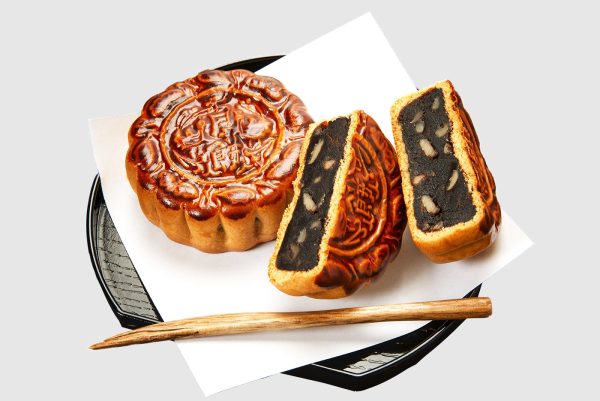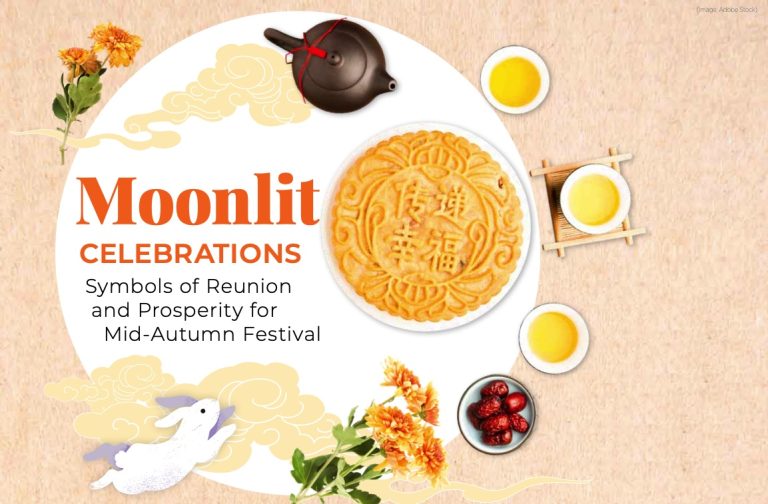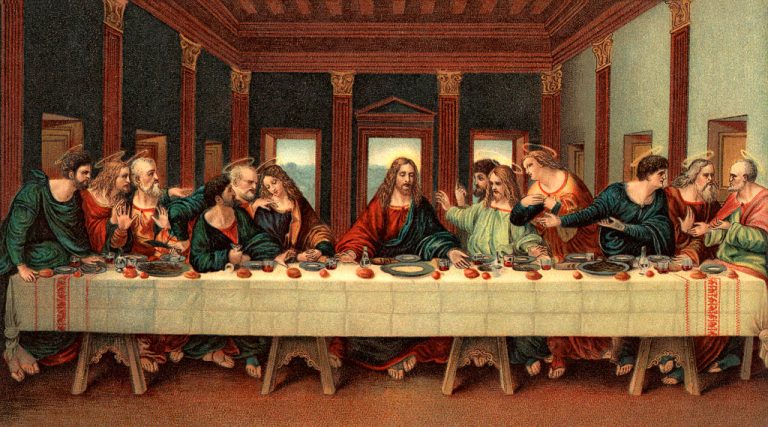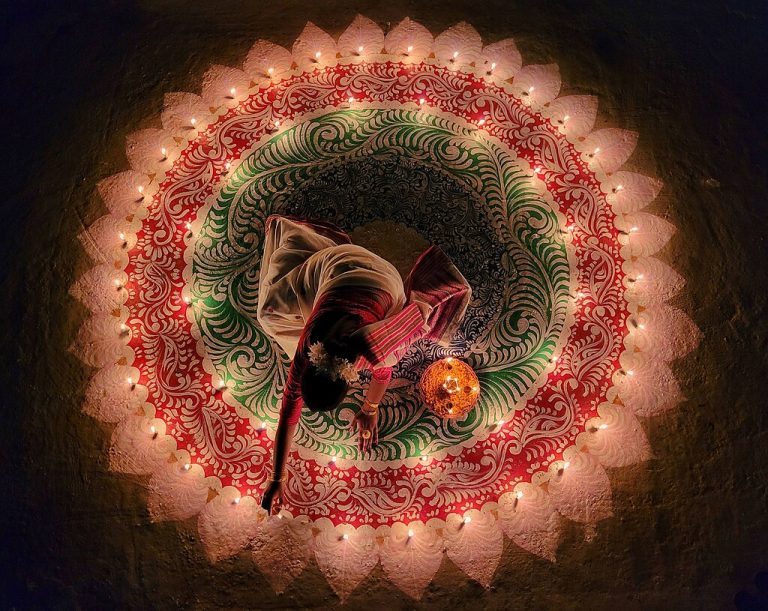As the Mid-Autumn Festival draws near and the moon waxes fuller, families prepare festive treats, reflecting on past gatherings with loved ones. Though originating in ancient China, the Mid-Autumn Festival is celebrated across many countries of Asia and, of course, the harvest moon is observable anywhere in the Northern Hemisphere.
One of the major ancient holidays, the Mid-Autumn Festival (中秋節) falls on the 15th of the eighth lunar month in the traditional Chinese calendar. The ancient Chinese viewed autumn as beginning in early August; hence, mid-autumn falls in September or October. This year, 2024, it is Sept. 17.
Mooncakes: a symbol of reunion
On the night of the Mid-Autumn Festival, families and friends gather to gaze at the sky and admire the full moon. In an age without telecommunications, those without the fortune to be with their loved ones could at least take solace in the fact that no matter where they were, everyone would be united in the same lunar beauty. This is why the festival is also known as the “Reunion Festival.”
- Reunite With Family Under a Full Moon! China’s Mid-Autumn Festival
- Legends of the Mid-Autumn Festival
- NY: Moon Festival Draws Tens of Thousands to Traditional Autumn Event
In ancient times, emperors held solemn ceremonies to worship the sun in spring and the moon in autumn. Among the people, there was a tradition of offering sacrifices to the moon during Mid-Autumn. The earliest mooncakes were offerings to the moon goddess.
After the moon-worshiping ceremony, the family elder would cut the mooncake into pieces, giving each person a share to celebrate the reunion. Even for those unable to attend, a portion of mooncake would be set aside to symbolize unity. For Chinese people, the round shape of both the moon and the mooncake signifies family togetherness, with mooncakes embodying thoughts of home and loved ones.

Wishes and blessings of the full moon
Success
You are now signed up for our newsletter
Success
Check your email to complete sign up
The Mid-Autumn Festival is rich in symbolism, reflected in traditional festival foods that have been passed down through generations. For instance, pomegranates, symbolizing fertility and prosperity, are eaten by families hoping for children, as the fruit was believed to bring the blessing of many offspring.
Autumn is also the season when grapes ripen. With their clustered appearance, grapes are considered a good omen for the festival, representing prayers for family prosperity.
The Chinese believe that praying to the moon goddess brings family harmony and good fortune. In addition to mooncakes, pomelos (柚) are a popular festival food due to their homophonic connection to the word for “bless” (佑) in Chinese. Eating pomelos is thought to invite the moon’s protection. The Mid-Autumn Festival coincides with the pomelo’s peak season, making it a favored offering.
Pomelo peels also have traditional uses. In the past, it was common to make lanterns out of pomelo rinds for children to play with on Mid-Autumn night. Carrying these lanterns through the streets was seen as an auspicious act. The thick and sturdy pomelo skin often added fun to the festivities, as people competed to quickly and skillfully craft pomelo peel “hats” during moon-viewing gatherings.
Watermelon carvings
In an imperial investigation of folk customs written during the Qing Dynasty (1644–1911), the Mid-Autumn Festival traditions of households in Beijing are described as follows: “On the 15th day of the 8th lunar month, offerings are made to the moon, and the fruits and cakes must be round. The watermelon is cut into intricate patterns, resembling lotus petals, a style known as “lotus petal watermelon.”
As the full moon rises on Mid-Autumn evening, women from each household prepare offerings of mooncakes, lotus-petal watermelons, and nine-sectioned lotus roots, symbolizing enduring affection, to worship the moon and pray for family reunion.
BBQ fun in Taiwan
Barbecues and mooncakes are both quintessential foods for celebrating the Mid-Autumn Festival in Taiwan. Starting in 1945, many people from various parts of China moved to Taiwan with the government, bringing a variety of mooncake styles. The now popular Mid-Autumn barbecue tradition, however, only started in the 1970s.
Over time, it became a common custom for Taiwanese people to enjoy barbecuing under the moonlight during the Mid-Autumn Festival, turning it into a relaxed and joyful evening with friends and family. Today, a wide range of barbecue ingredients, from slices of meat and sausages to tempura and corn, are popular items for the celebration.
Tsukimi: Viewing the moon in Japan
Inspired by Chinese practices, Japanese nobles would gather with friends to admire the moon and compose poetry on the night of the Mid-Autumn Festival. On this evening, various regions in Japan also hold moon-worshiping and harvest celebration ceremonies, with offerings that typically include round foods resembling the full moon, the most representative being tsukimi dango (moon dumplings).
Even in modern times, the Japanese are enthusiastic enjoyers of the full moon, carrying on many of the old traditions of Tsukimi (月見), which literally means moon-viewing, and in the days leading up to the Mid-Autumn Festival, many products with this theme appear in Japanese shops and streets, reflecting the custom of moon appreciation. Traditional tsukimi dango are made from rice, and in line with the auspicious meaning of the 15th day, Japanese people often stack 15 of these dumplings in a pyramid shape as offerings to the moon.
In other parts of Asia influenced by ancient China, such as Korea and Vietnam, similar holidays exist to celebrate the harvest moon. In Vietnam it is called the Tết Trung Thu (節中秋), and features a celebration of children, whose innocence is believed to give them a closer connection to nature.
The Korean celebration of the mid-autumn full moon is known as Chuseok (秋夕) — literally “the autumn night” — and has many local variations on the ancient customs of paying respects to ancestors and family reunion.
A unique form of Korean art, the moon jar, evokes the round whiteness of the full lunar phase. Moon jars often appear in traditional Korean paintings for their serene appearance.







